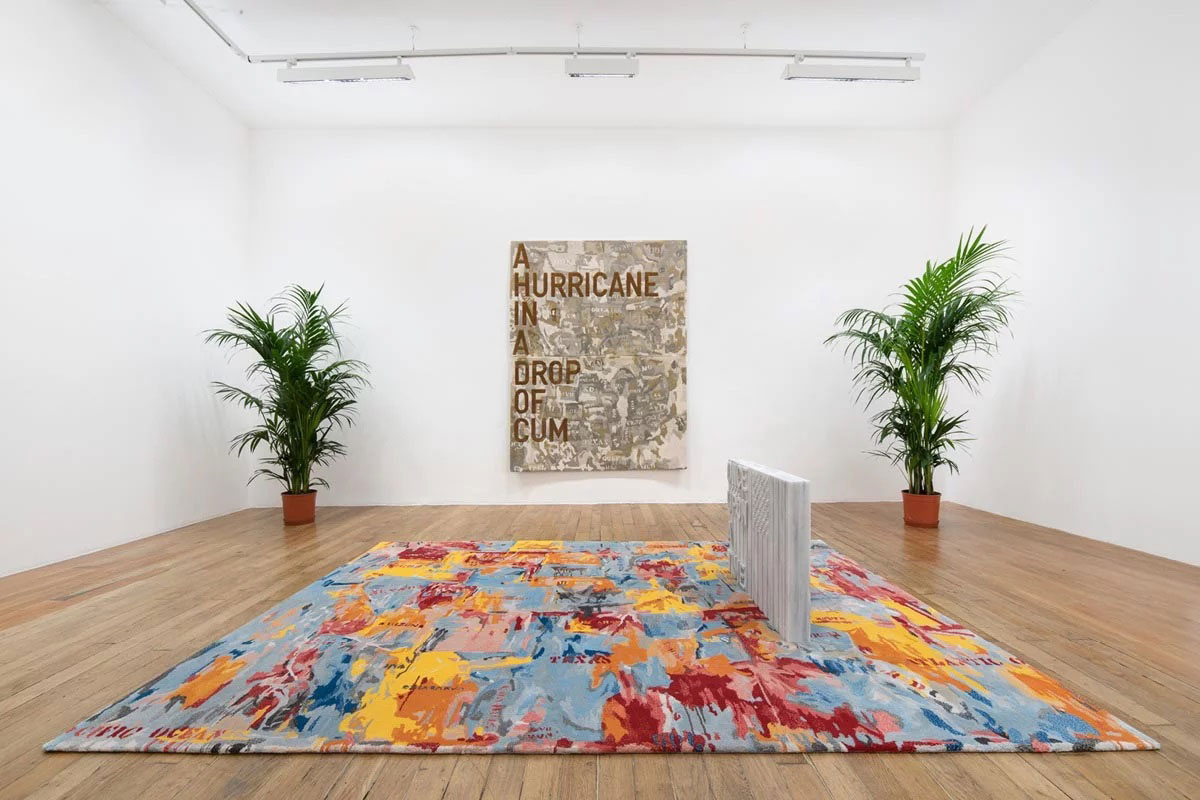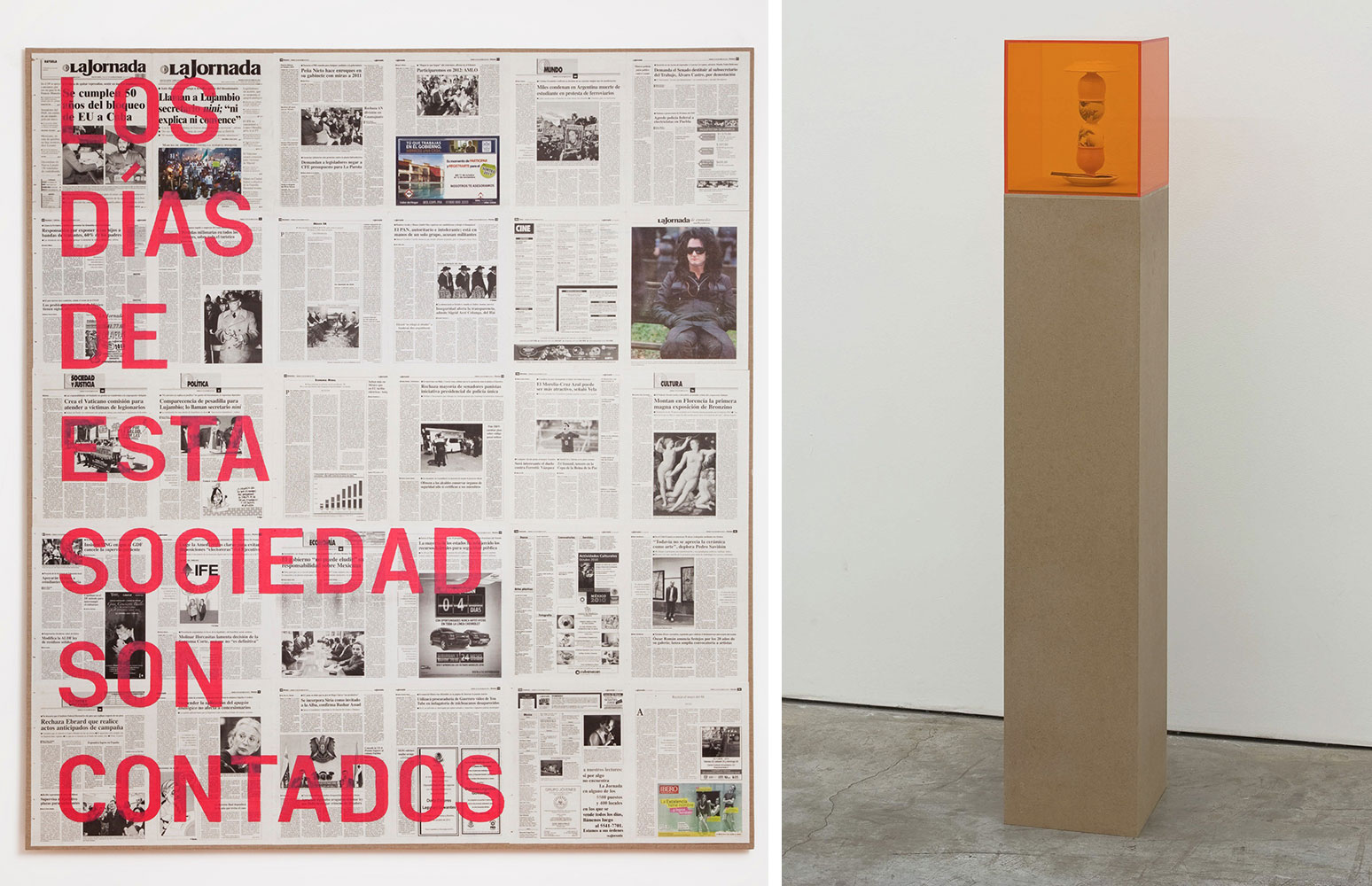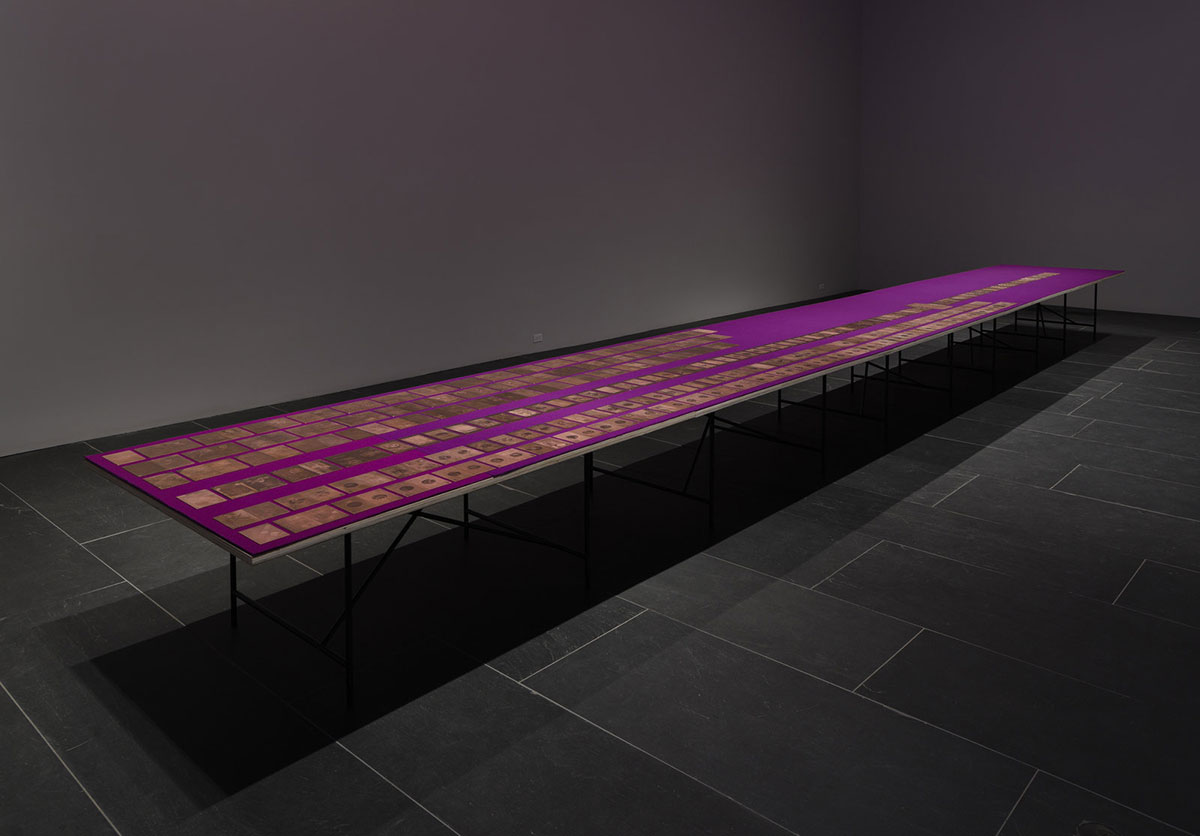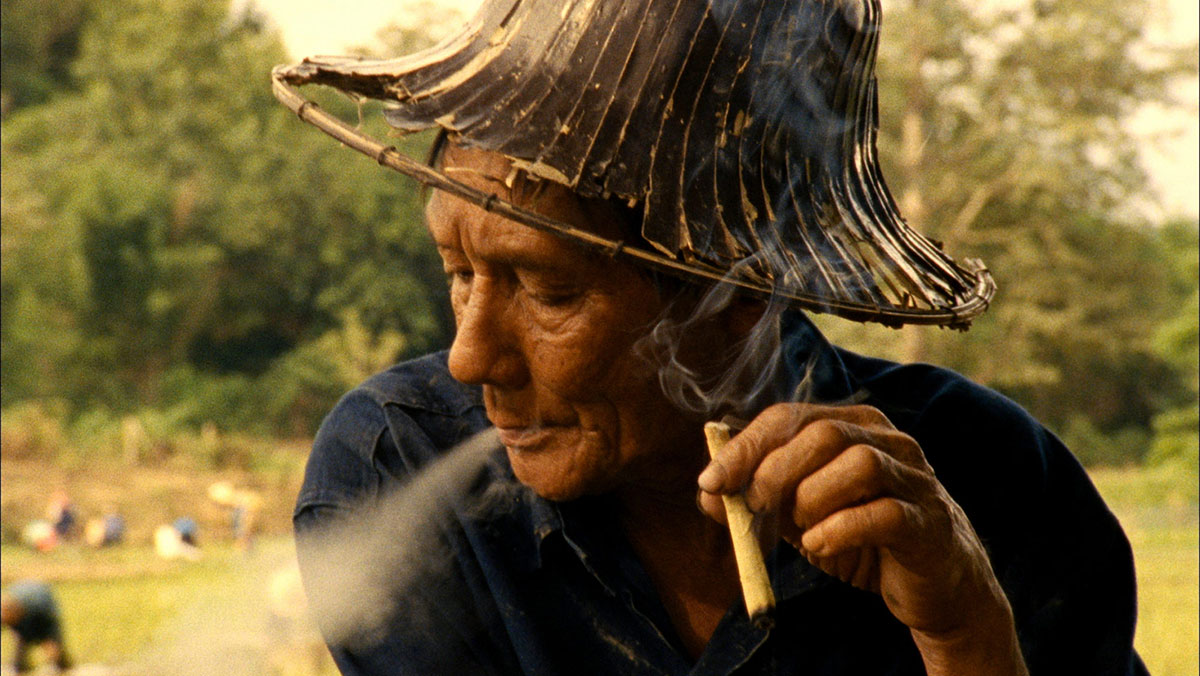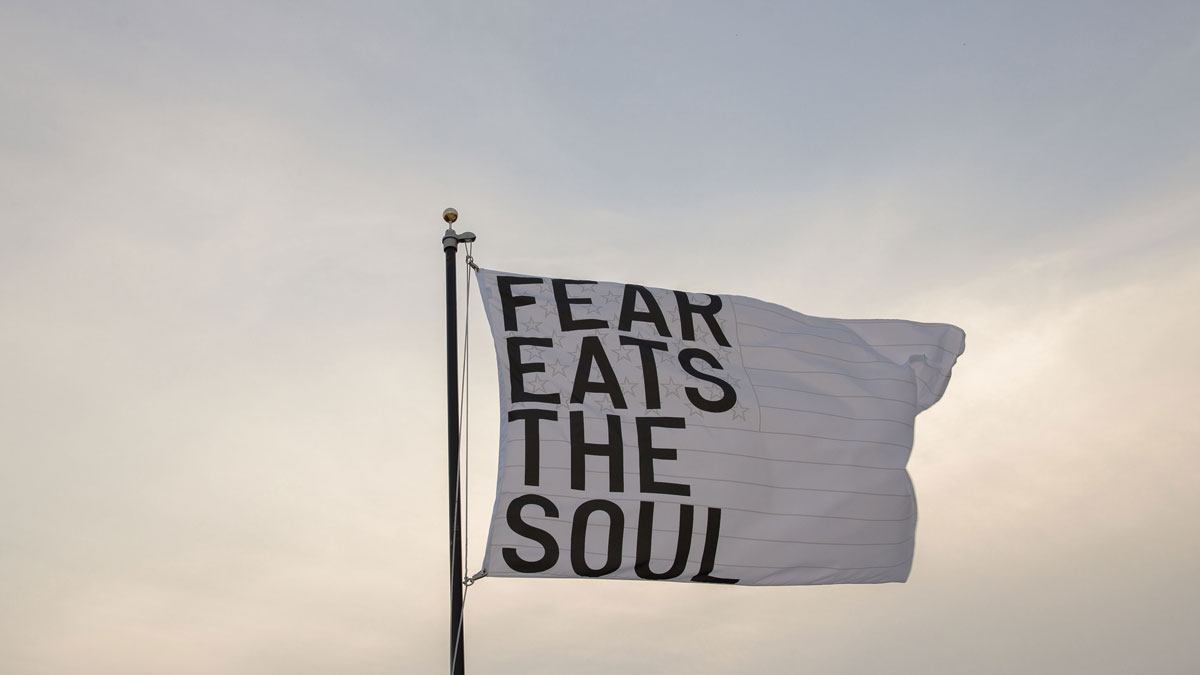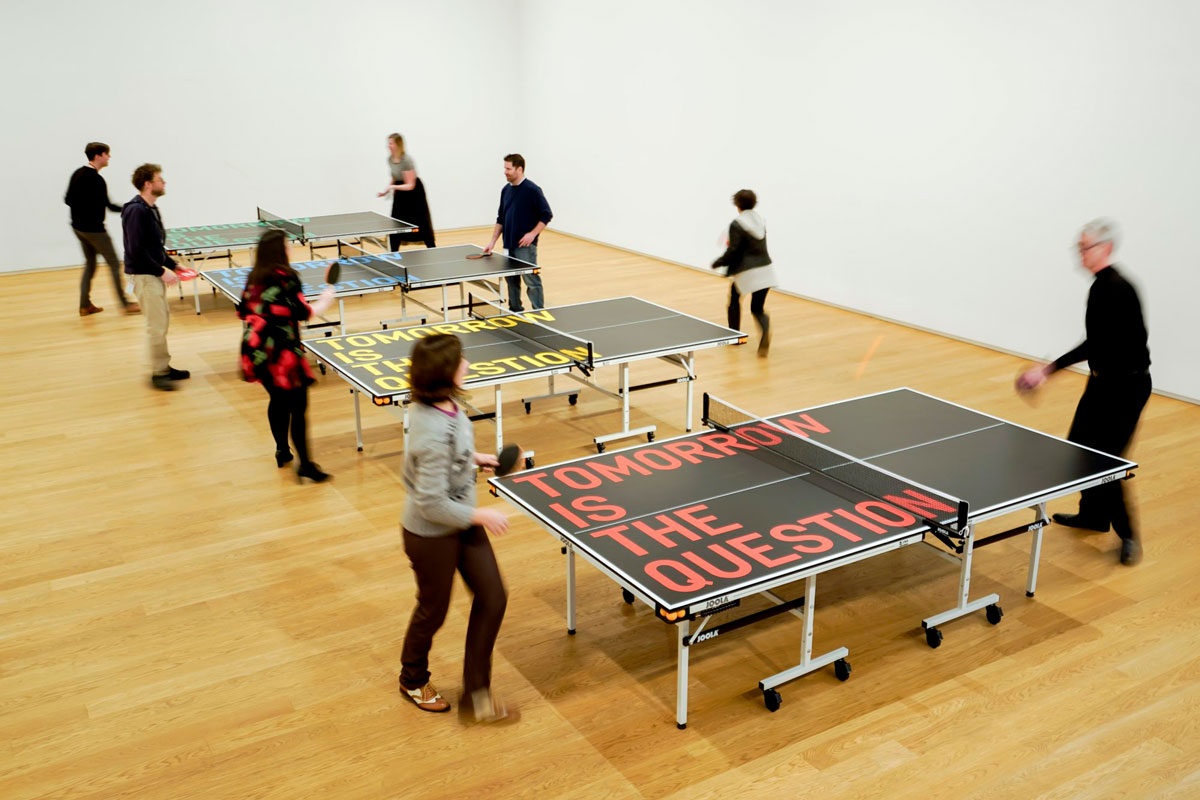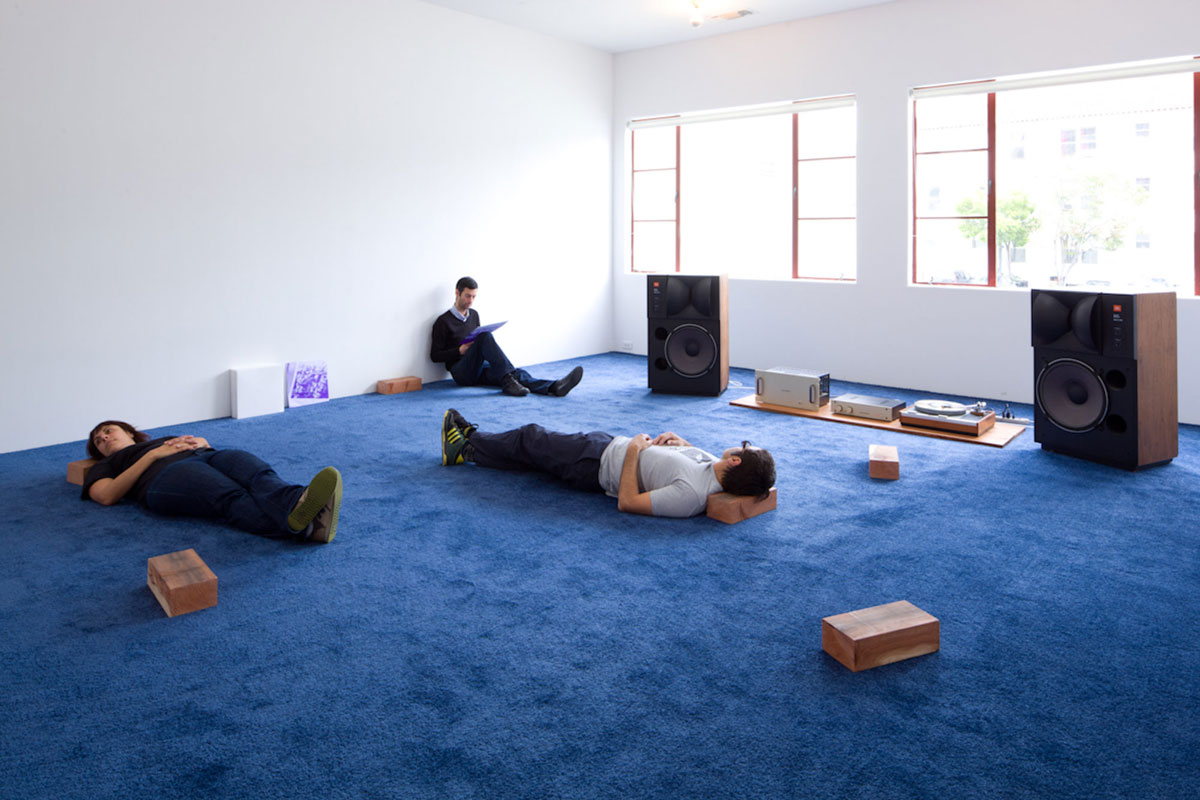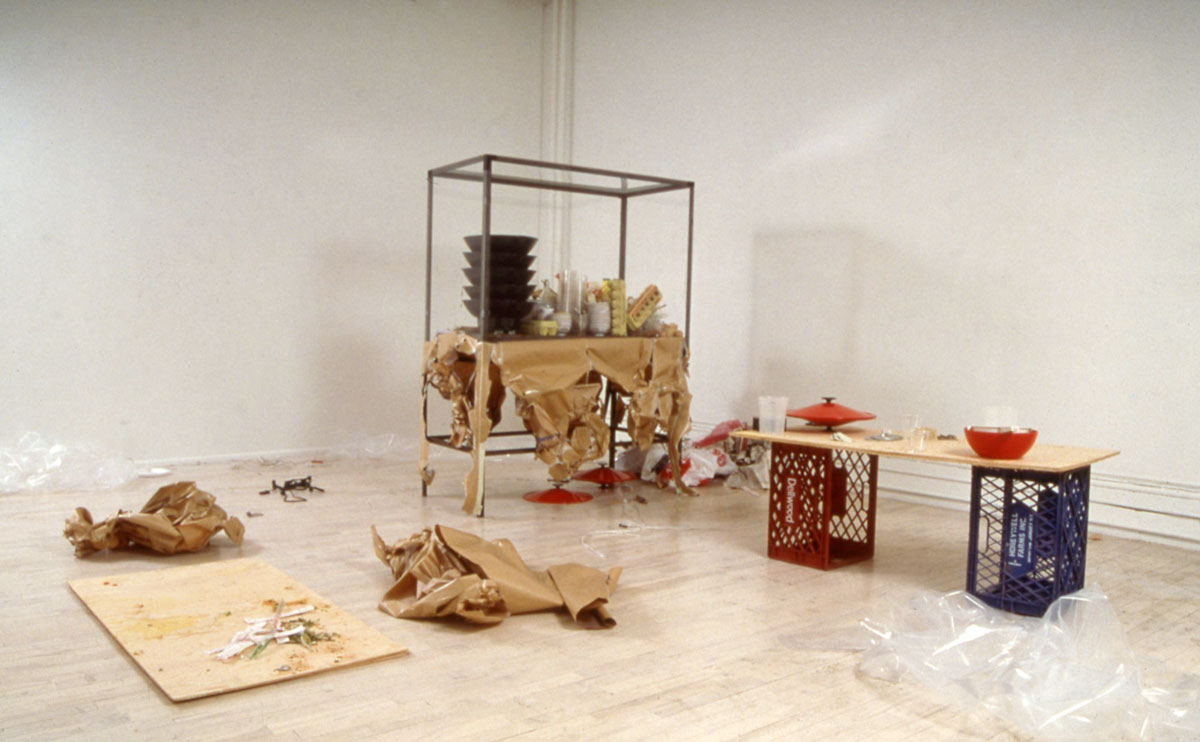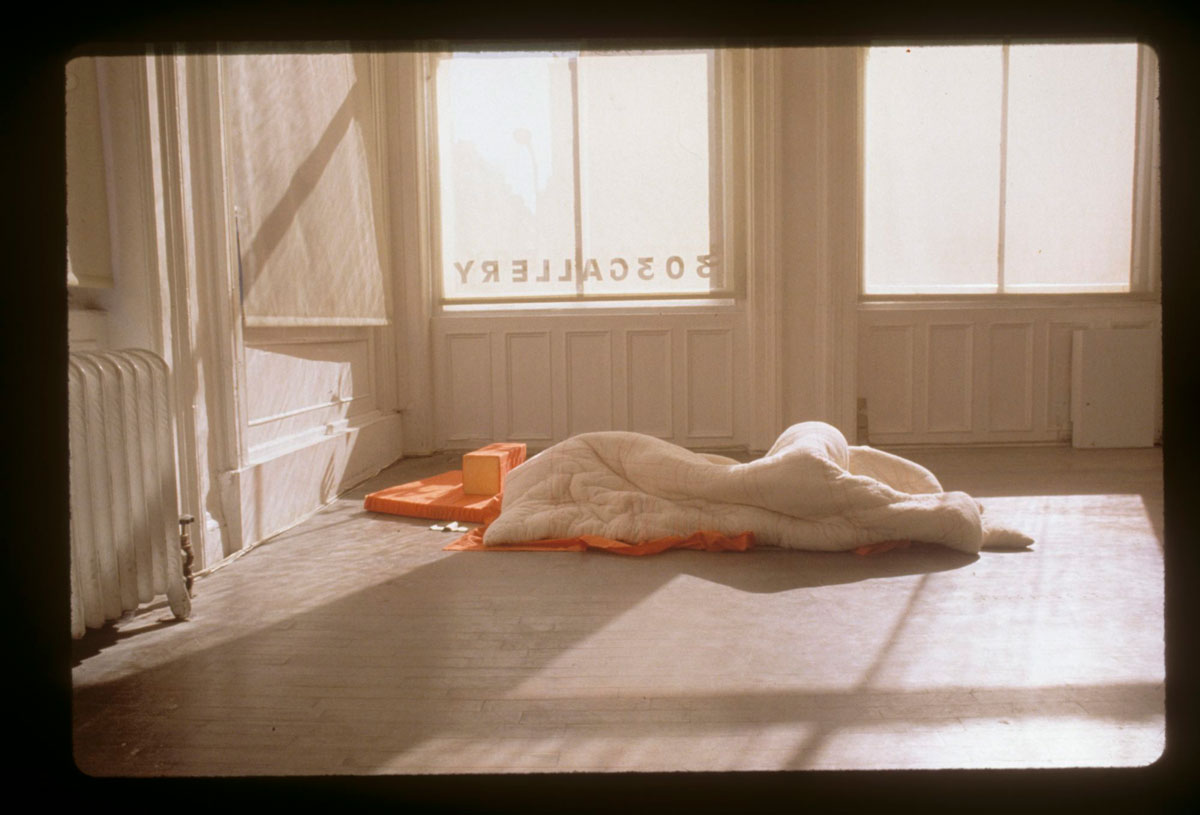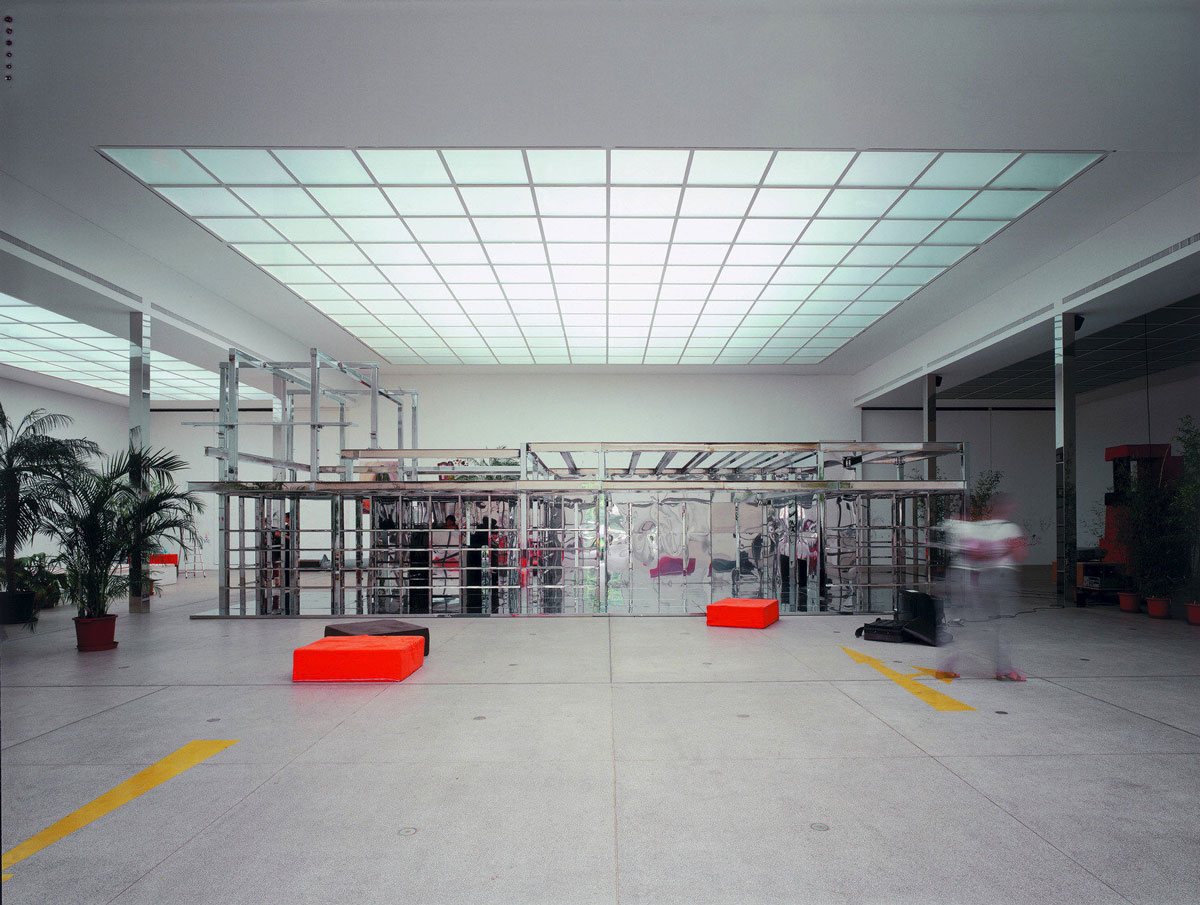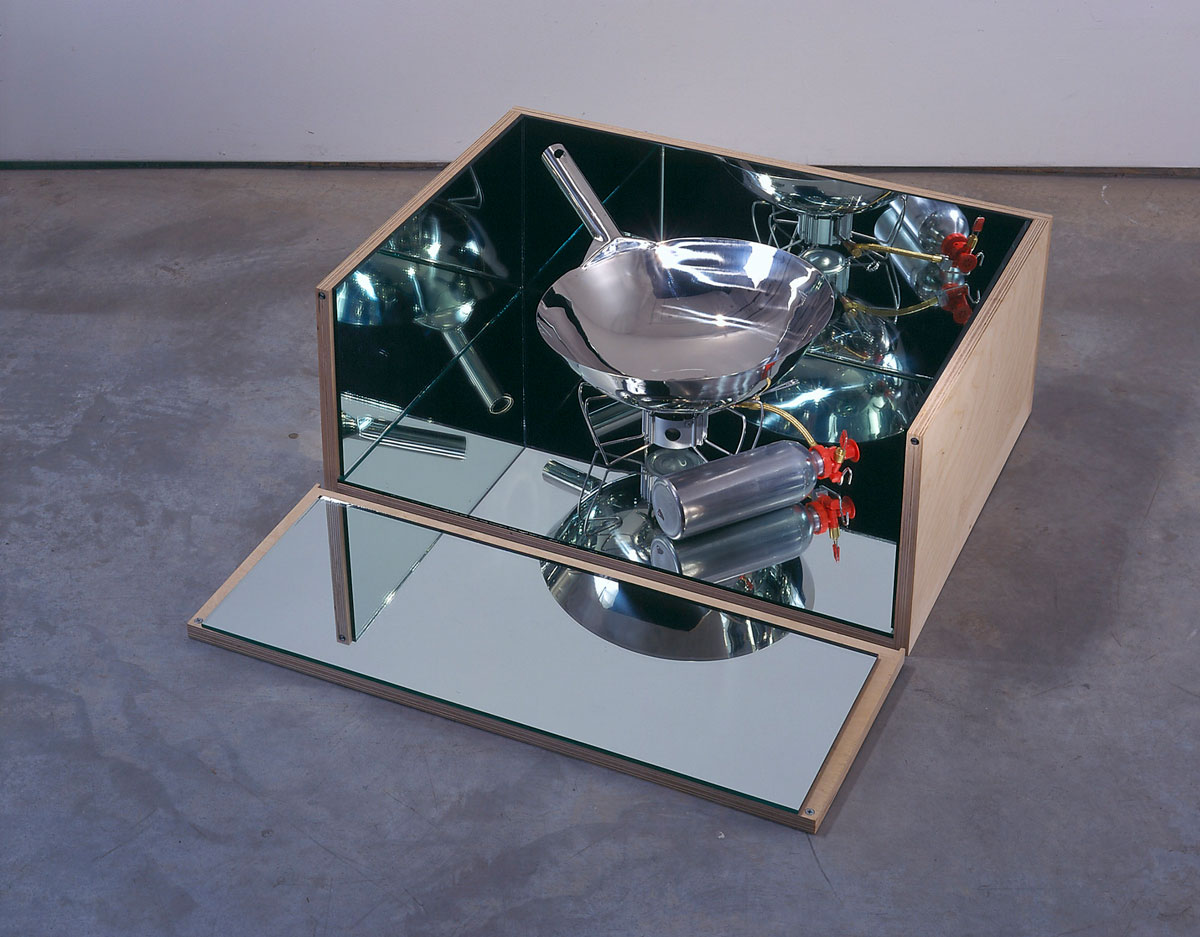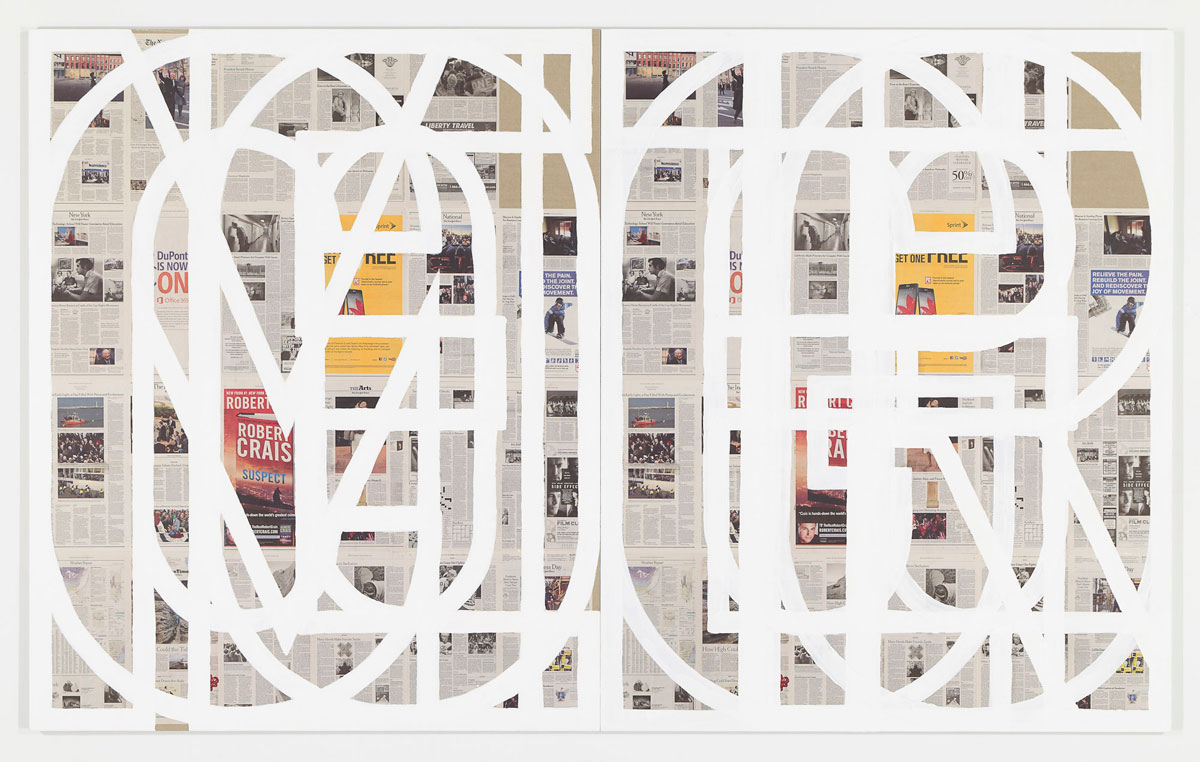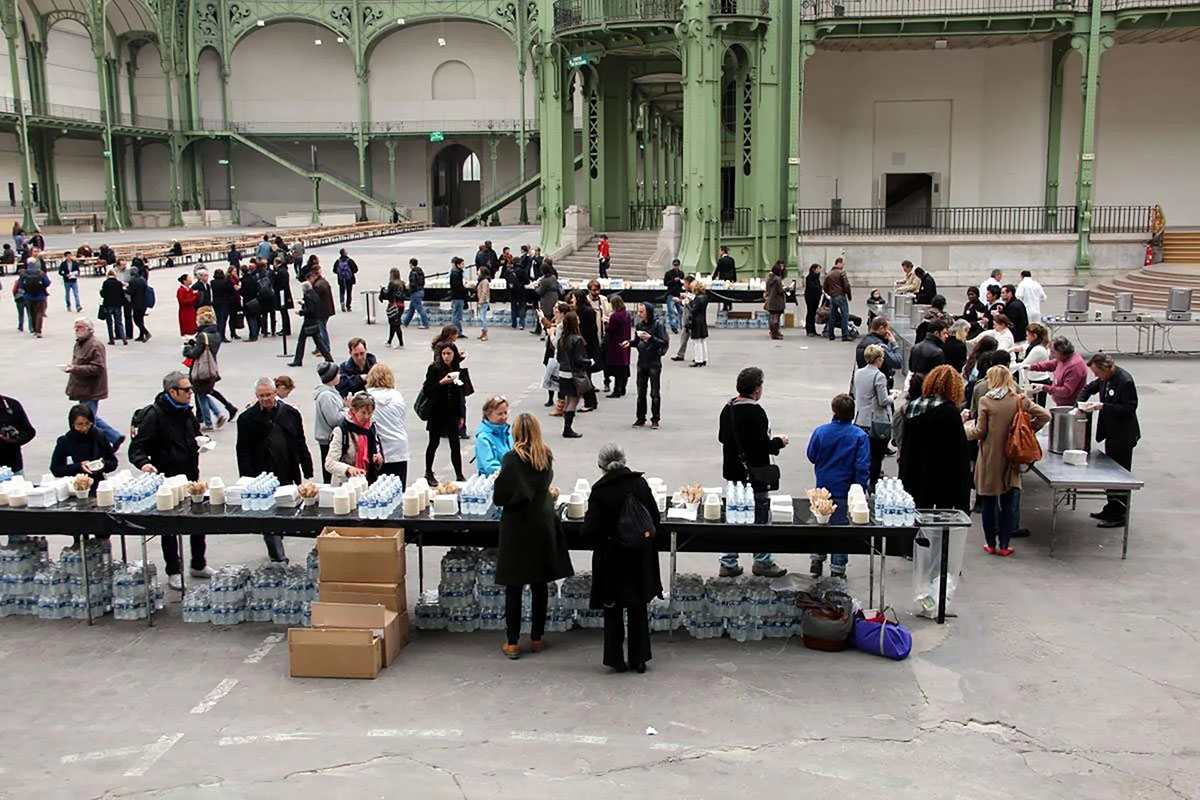TRACES: Rirkrit Tiravanija
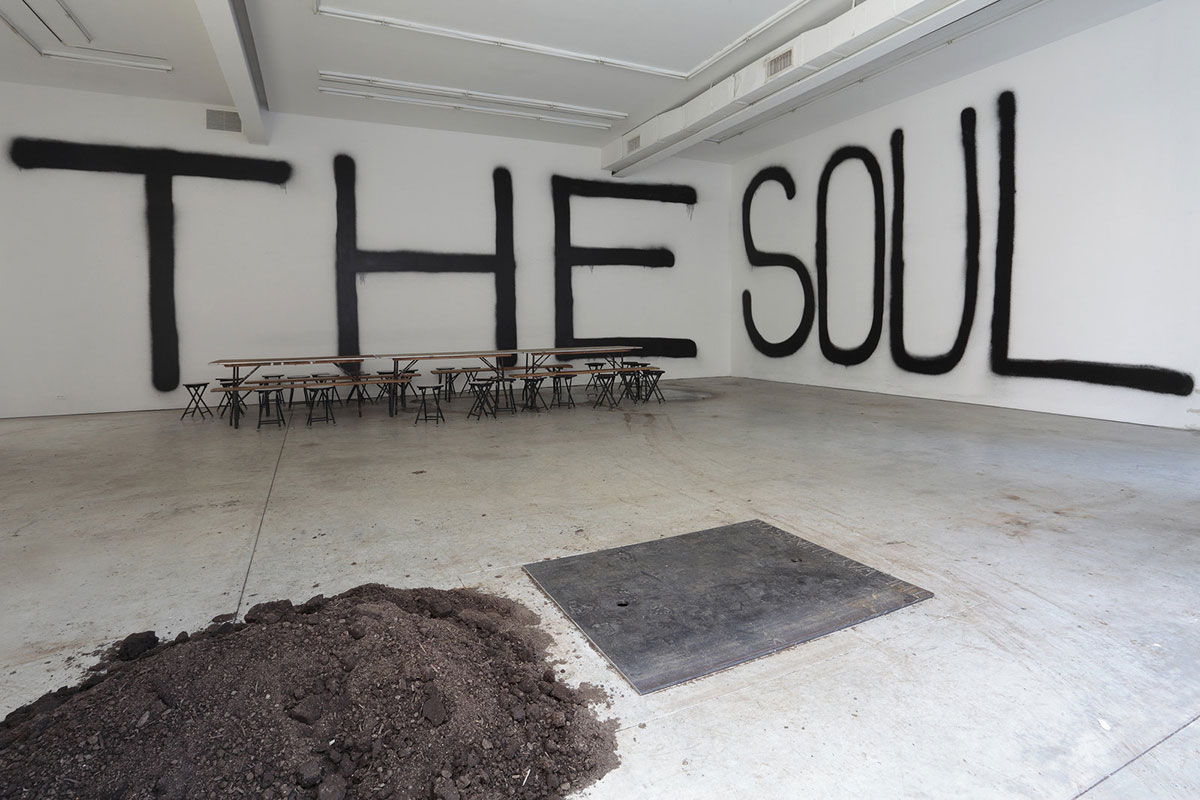 Today is the occasion to bear in mind Rirkrit Tiravanija (21/6/1961- ). Even though his diverse artistic production eludes classification, he has accurately described it as “relational”: a body of work focused on real-time experience and exchange that breaks down the barriers between the object and the spectator while questioning the art object as fetish, and the sacredness of the gallery and museum display. Through documents or interviews, starting with: moments and memories, we reveal out from the past-unknown sides of big personalities, who left their indelible traces in time and history…
Today is the occasion to bear in mind Rirkrit Tiravanija (21/6/1961- ). Even though his diverse artistic production eludes classification, he has accurately described it as “relational”: a body of work focused on real-time experience and exchange that breaks down the barriers between the object and the spectator while questioning the art object as fetish, and the sacredness of the gallery and museum display. Through documents or interviews, starting with: moments and memories, we reveal out from the past-unknown sides of big personalities, who left their indelible traces in time and history…
By Dimitris Lempesis
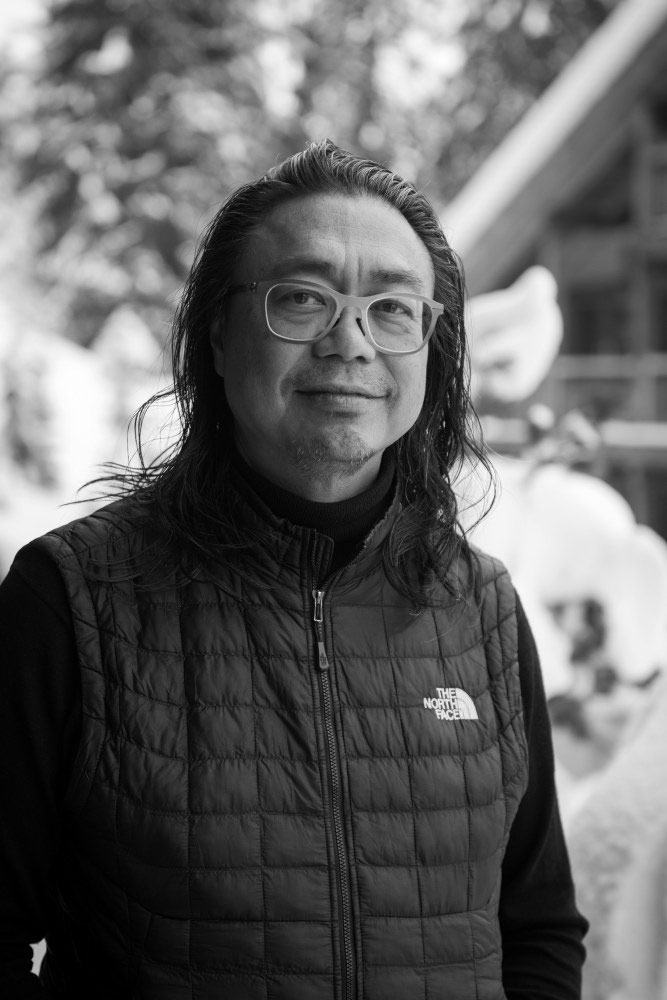 Rirkrit Tiravanija was born in Buenos Aires in 1961. The son of a Thai diplomat, he moved frequently during his youth, growing up primarily in Thailand, Ethiopia, and Canada. He received his BA from the Ontario College of Art, Toronto, in 1984, and his MFA from the School of the Art Institute of Chicago in 1986. In 1985 to 1986, he participated in the prestigious Whitney Museum of American Art Independent Study Program, New York. Tiravanija’s work first came to public awareness in a 1989 New York gallery through “untitled ()”, which consisted of weekly renewed displays of the various stages of a green curry meal: a pedestal for ingredients, a pedestal for curry cooking on a burner, and a pedestal with waste products. For his first solo show “Pad Thai” in 1992, Rirkrit Tiravanija set up a kitchen inside the 303 Gallery space in New York and proceeded to cook Thai food for visitors. However, as Tiravanija explains, the “art” produced through this activity was not the food itself, but the encounters that occurred between people who participated in the communal experience. In fact, his list of materials for many of his works includes the phrase “lots of people.” Bourriaud considered Pad Thai to be revolutionary for the art world, as, rather than putting any artworks on display, Tiravanija created a situation which, in any other context, would not be considered artistic. Tiravanija is the artist most commonly associated with Relational Aesthetics, and has even described his own work as “relational.” He has described his work as “comparable to reaching out, removing Marcel Duchamp’s urinal from its pedestal, reinstalling it back on the wall, and then, in an act of returning it to its original use, pissing in it.” In addition to “Pad Thai”, and a number of similar works in which he cooked food for participants, he staged other opportunities for visitors/participants to connect with one another through pop-up versions of banal activities. For example, in “Untitled” (1999) he constructed an exact replica of his East Village apartment and invited several students to come live in it. For his piece “The Land” (1999-), Tiravanija and others transformed a plot of arable land in Thailand into a communally-run site for artistic and agricultural pursuits and social collaboration, which continues today as there is no time limitation for the cultivation of it. In 1997 Tiravanija began an engagement with modernist architecture when he installed in the Museum of Modern Art’s sculpture garden “Untitled: 1997 (Glass House)”, a child-size version of Philip Johnson’s Glass House (1949). Similarly, “untitled 2002: (he promised) is an arena of activities ranging from DJ sessions to film screenings within a chrome and steel structure inspired by Rudolf M. Schindler’s Kings Road House (1922) in West Hollywood. In Tiravanija’s “untitled 2006 (pavilion, table and puzzle)” installation, visitors are welcome to gather at a picnic table to assemble an expansive puzzle depicting Eugène Delacroix’s 1830 masterpiece, “Liberty Leading the People”; a pavilion-like structure, a replica of one designed by Jean Prouvé for use in French colonial Africa, completes the tableau. For “Asile Flottant” (2010), he constructed a sketch of Le Corbusier’s boat of the same name and inserted a section of it into a gallery. Le Corbusier’s barge was designed for the Salvation Army literally as a floating asylum meant to provide temporary overnight shelter for vagrants wandering the streets of Paris; Tiravanija’s barge, constructed in Chiang Mai, was to serve as a pavilion that houses both political T-shirts designed by the artist, and others that have been collected from all over the world. In 2004 the Solomon R. Guggenheim Museum in New York honoured Tiravanija with the Hugo Boss Prize and presented an exhibition of his work, which had more overtly political tones. Featured in this exhibition, “Untitled 2005 (The Air Between the Chain-Link Fence and the Broken Bicycle Wheel)” was an installation in which the artist addressed governmental control of popular media by installing a low-tech pirate television station within the museum, using a simple metal antenna and cables as broadcasting equipment, accompanied by a small wooden structure housing a television set and chairs. On the gallery walls Tiravanija featured the text of the US Constitution’s First Amendment (advocating freedom of speech), a history of radio and television communication in America, and simple directions for constructing low-tech broadcasting equipment. Tiravanija’s support of free speech is conveyed by his choice to broadcast the low-budget film “Punishment Park” (1971), a documentary on the suppression of Vietnam War protests, In 2017, Tiravanija created a shot-by-shot remake of Rainer Werner Fassbinder’s seminal 1974 film, Angst essen See/e auf. The film, in part, takes place in a Munich bar, where we meet the bartender Barbara. Tiravanija’s remake is installed on a bar designed by the artist, which is activated by Tiravanija’s ‘Barbara’ – the Austrian actor Florian Troebinger – who will serve you beer or coke, and engage in conversation. “T-shirt printing. Atelier”: T-shirt printing workshops with Tiravanija’s slogan designs. The texts for the slogans were sourced by the artist from the opera Hanjo, and turned into individual lines that also appear at the entrance to the building. T-shirt printing has been an ongoing aspect of Tiravanija’s practice, drawing the connections between fashion, politics, and individuality. “untitled 2013 {morgen ist die frage}”: A series of the artist’s ping pong tables, untitled 2013 (morgen ist die frage), in the Terrassensaal. The work, “Tomorrow Is the Question,” revives Ping Pong Society, a brainchild of Slovak artist Julius Koller (1939-2007) first showcased in Bratislava in 1970. Koller arranged ping-pong tables in an exhibition space and urged visitors to join in. His objective was to engage and motivate people to explore active contemplation, specifically on the issues of the day: environmental, social, and political. Following in Keller’s footsteps, Tiravanija’s ping pong tables with the phrase “tomorrow is the question,” welcoming visitors to shed their passive roles and actively participate by playing or encouraging others to play. Tiravanija emphasises human relationships, interaction, and engagement, and a collective centering on the questions of our uncertain future. “untitled 2011 {pay attention}”: A screening of the video work, at the entrance of Haus der Kunst. The work centres on Tiravanija’s interest in the social relationship between citizens, the role of government, and personal liberty, referencing the 2009-10 antigovernment protests in Bangkok, Thailand, and “Banners”: a double-sided newly commissioned banner. In his solo exhibition “Tomorrow is the Question” (2016), Rirkrit Tiravanija set up a series of stainless steel ping pong tables and invite the public to participate in his work. Tiravanija has staged exhibitions at venues throughout the world. The exhibition previously presented in Moscow, Arles, France, and elsewhere, marks the artist’s debut in Amsterdam. With his installation on the Museumplein, Tiravanija blurs once again the line between art and life. The work playfully confronts traditional ways of viewing art in classic Tiravanija style, as well as the etiquette that goes with it. As an alternative, the artist offers a more theatrical, social and more enjoyable experience. Tiravanija sees art as something artist and viewer create together, a process where people can be social beings, preferably outside the rarified realm of the gallery space. “It is not what you see that is important, but what takes place between people”.
Rirkrit Tiravanija was born in Buenos Aires in 1961. The son of a Thai diplomat, he moved frequently during his youth, growing up primarily in Thailand, Ethiopia, and Canada. He received his BA from the Ontario College of Art, Toronto, in 1984, and his MFA from the School of the Art Institute of Chicago in 1986. In 1985 to 1986, he participated in the prestigious Whitney Museum of American Art Independent Study Program, New York. Tiravanija’s work first came to public awareness in a 1989 New York gallery through “untitled ()”, which consisted of weekly renewed displays of the various stages of a green curry meal: a pedestal for ingredients, a pedestal for curry cooking on a burner, and a pedestal with waste products. For his first solo show “Pad Thai” in 1992, Rirkrit Tiravanija set up a kitchen inside the 303 Gallery space in New York and proceeded to cook Thai food for visitors. However, as Tiravanija explains, the “art” produced through this activity was not the food itself, but the encounters that occurred between people who participated in the communal experience. In fact, his list of materials for many of his works includes the phrase “lots of people.” Bourriaud considered Pad Thai to be revolutionary for the art world, as, rather than putting any artworks on display, Tiravanija created a situation which, in any other context, would not be considered artistic. Tiravanija is the artist most commonly associated with Relational Aesthetics, and has even described his own work as “relational.” He has described his work as “comparable to reaching out, removing Marcel Duchamp’s urinal from its pedestal, reinstalling it back on the wall, and then, in an act of returning it to its original use, pissing in it.” In addition to “Pad Thai”, and a number of similar works in which he cooked food for participants, he staged other opportunities for visitors/participants to connect with one another through pop-up versions of banal activities. For example, in “Untitled” (1999) he constructed an exact replica of his East Village apartment and invited several students to come live in it. For his piece “The Land” (1999-), Tiravanija and others transformed a plot of arable land in Thailand into a communally-run site for artistic and agricultural pursuits and social collaboration, which continues today as there is no time limitation for the cultivation of it. In 1997 Tiravanija began an engagement with modernist architecture when he installed in the Museum of Modern Art’s sculpture garden “Untitled: 1997 (Glass House)”, a child-size version of Philip Johnson’s Glass House (1949). Similarly, “untitled 2002: (he promised) is an arena of activities ranging from DJ sessions to film screenings within a chrome and steel structure inspired by Rudolf M. Schindler’s Kings Road House (1922) in West Hollywood. In Tiravanija’s “untitled 2006 (pavilion, table and puzzle)” installation, visitors are welcome to gather at a picnic table to assemble an expansive puzzle depicting Eugène Delacroix’s 1830 masterpiece, “Liberty Leading the People”; a pavilion-like structure, a replica of one designed by Jean Prouvé for use in French colonial Africa, completes the tableau. For “Asile Flottant” (2010), he constructed a sketch of Le Corbusier’s boat of the same name and inserted a section of it into a gallery. Le Corbusier’s barge was designed for the Salvation Army literally as a floating asylum meant to provide temporary overnight shelter for vagrants wandering the streets of Paris; Tiravanija’s barge, constructed in Chiang Mai, was to serve as a pavilion that houses both political T-shirts designed by the artist, and others that have been collected from all over the world. In 2004 the Solomon R. Guggenheim Museum in New York honoured Tiravanija with the Hugo Boss Prize and presented an exhibition of his work, which had more overtly political tones. Featured in this exhibition, “Untitled 2005 (The Air Between the Chain-Link Fence and the Broken Bicycle Wheel)” was an installation in which the artist addressed governmental control of popular media by installing a low-tech pirate television station within the museum, using a simple metal antenna and cables as broadcasting equipment, accompanied by a small wooden structure housing a television set and chairs. On the gallery walls Tiravanija featured the text of the US Constitution’s First Amendment (advocating freedom of speech), a history of radio and television communication in America, and simple directions for constructing low-tech broadcasting equipment. Tiravanija’s support of free speech is conveyed by his choice to broadcast the low-budget film “Punishment Park” (1971), a documentary on the suppression of Vietnam War protests, In 2017, Tiravanija created a shot-by-shot remake of Rainer Werner Fassbinder’s seminal 1974 film, Angst essen See/e auf. The film, in part, takes place in a Munich bar, where we meet the bartender Barbara. Tiravanija’s remake is installed on a bar designed by the artist, which is activated by Tiravanija’s ‘Barbara’ – the Austrian actor Florian Troebinger – who will serve you beer or coke, and engage in conversation. “T-shirt printing. Atelier”: T-shirt printing workshops with Tiravanija’s slogan designs. The texts for the slogans were sourced by the artist from the opera Hanjo, and turned into individual lines that also appear at the entrance to the building. T-shirt printing has been an ongoing aspect of Tiravanija’s practice, drawing the connections between fashion, politics, and individuality. “untitled 2013 {morgen ist die frage}”: A series of the artist’s ping pong tables, untitled 2013 (morgen ist die frage), in the Terrassensaal. The work, “Tomorrow Is the Question,” revives Ping Pong Society, a brainchild of Slovak artist Julius Koller (1939-2007) first showcased in Bratislava in 1970. Koller arranged ping-pong tables in an exhibition space and urged visitors to join in. His objective was to engage and motivate people to explore active contemplation, specifically on the issues of the day: environmental, social, and political. Following in Keller’s footsteps, Tiravanija’s ping pong tables with the phrase “tomorrow is the question,” welcoming visitors to shed their passive roles and actively participate by playing or encouraging others to play. Tiravanija emphasises human relationships, interaction, and engagement, and a collective centering on the questions of our uncertain future. “untitled 2011 {pay attention}”: A screening of the video work, at the entrance of Haus der Kunst. The work centres on Tiravanija’s interest in the social relationship between citizens, the role of government, and personal liberty, referencing the 2009-10 antigovernment protests in Bangkok, Thailand, and “Banners”: a double-sided newly commissioned banner. In his solo exhibition “Tomorrow is the Question” (2016), Rirkrit Tiravanija set up a series of stainless steel ping pong tables and invite the public to participate in his work. Tiravanija has staged exhibitions at venues throughout the world. The exhibition previously presented in Moscow, Arles, France, and elsewhere, marks the artist’s debut in Amsterdam. With his installation on the Museumplein, Tiravanija blurs once again the line between art and life. The work playfully confronts traditional ways of viewing art in classic Tiravanija style, as well as the etiquette that goes with it. As an alternative, the artist offers a more theatrical, social and more enjoyable experience. Tiravanija sees art as something artist and viewer create together, a process where people can be social beings, preferably outside the rarified realm of the gallery space. “It is not what you see that is important, but what takes place between people”.

